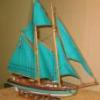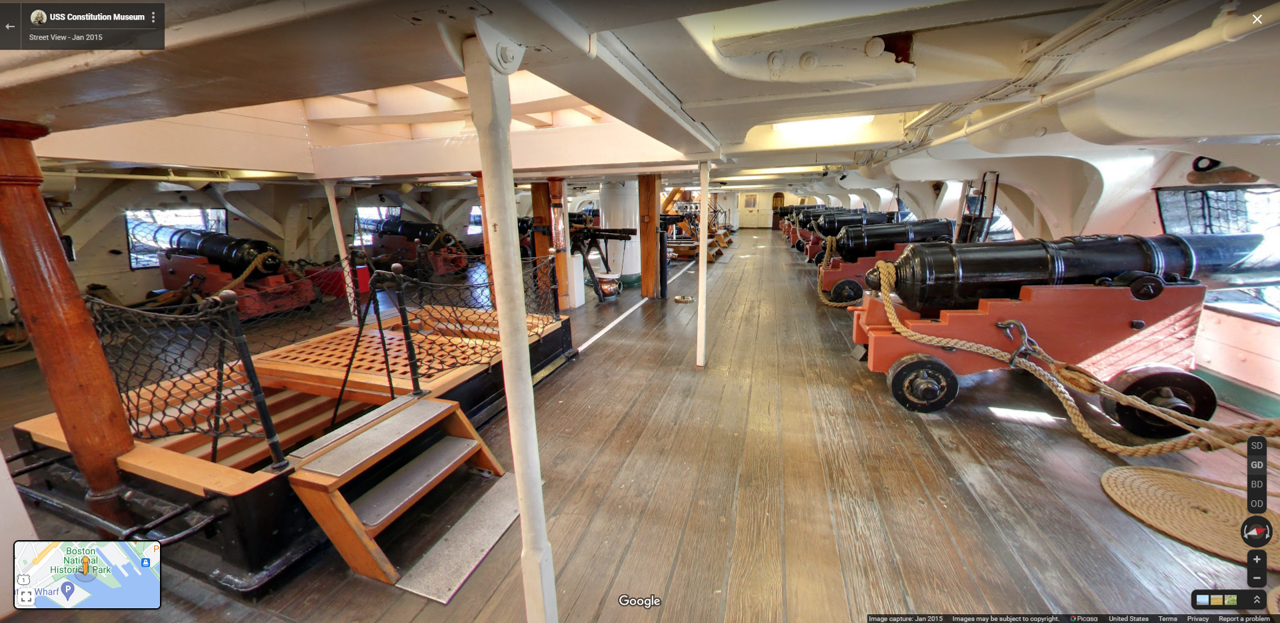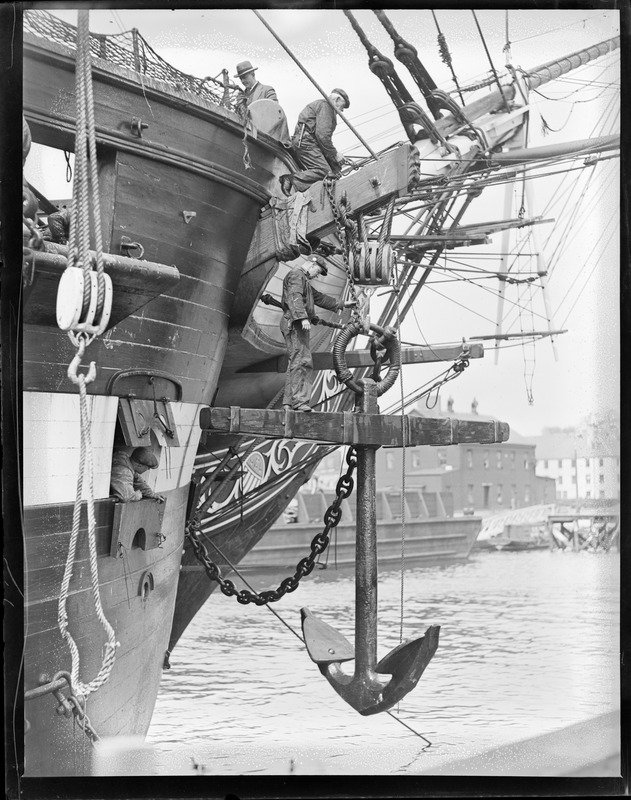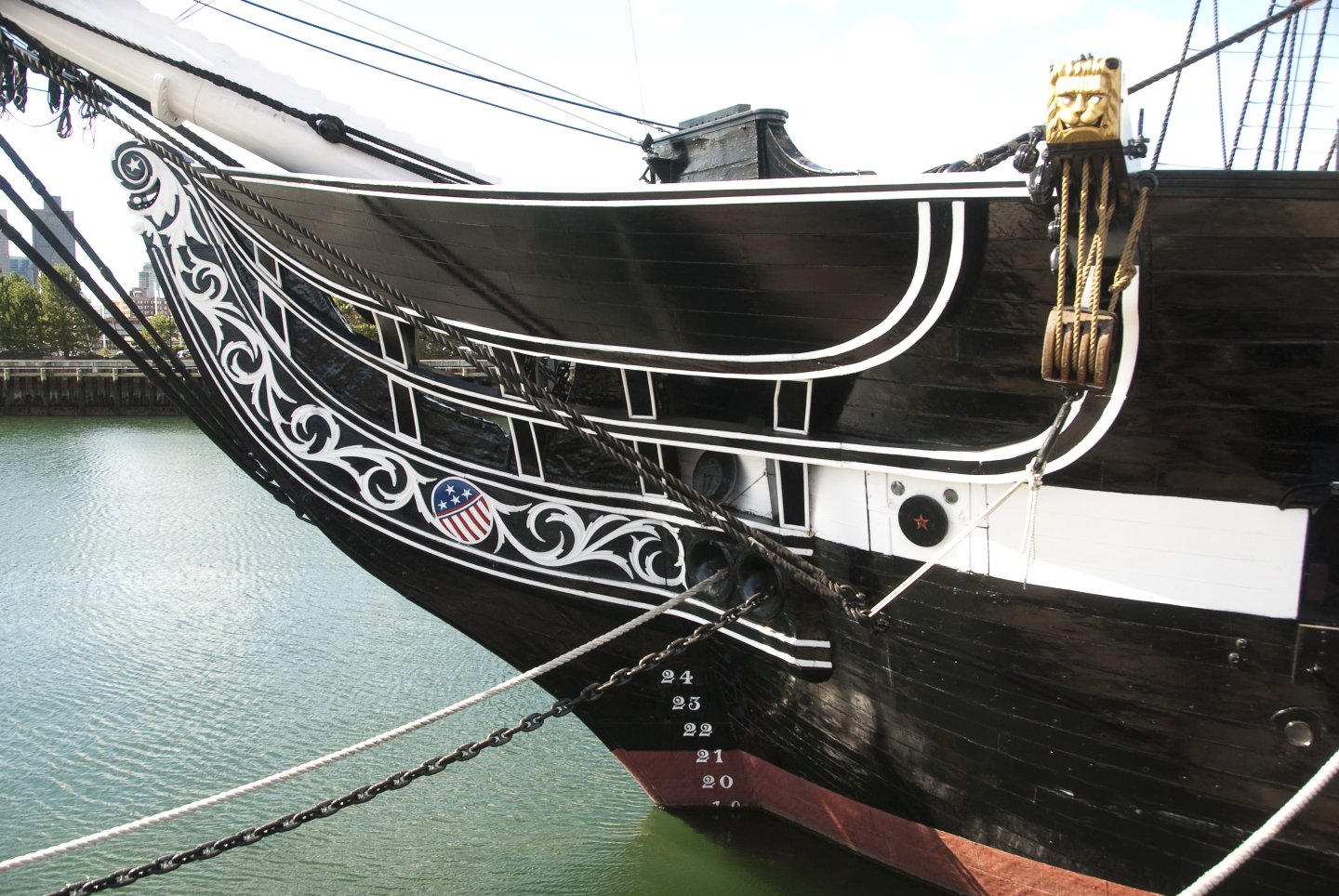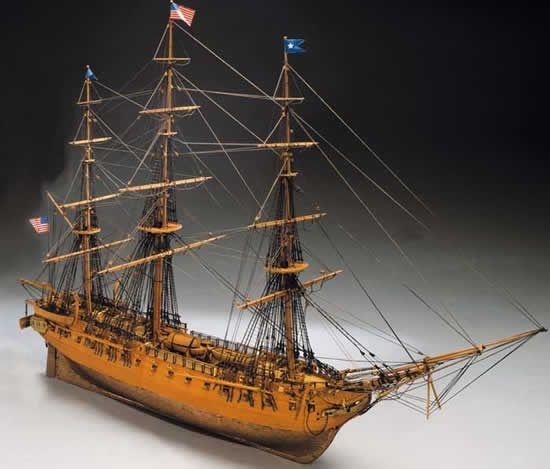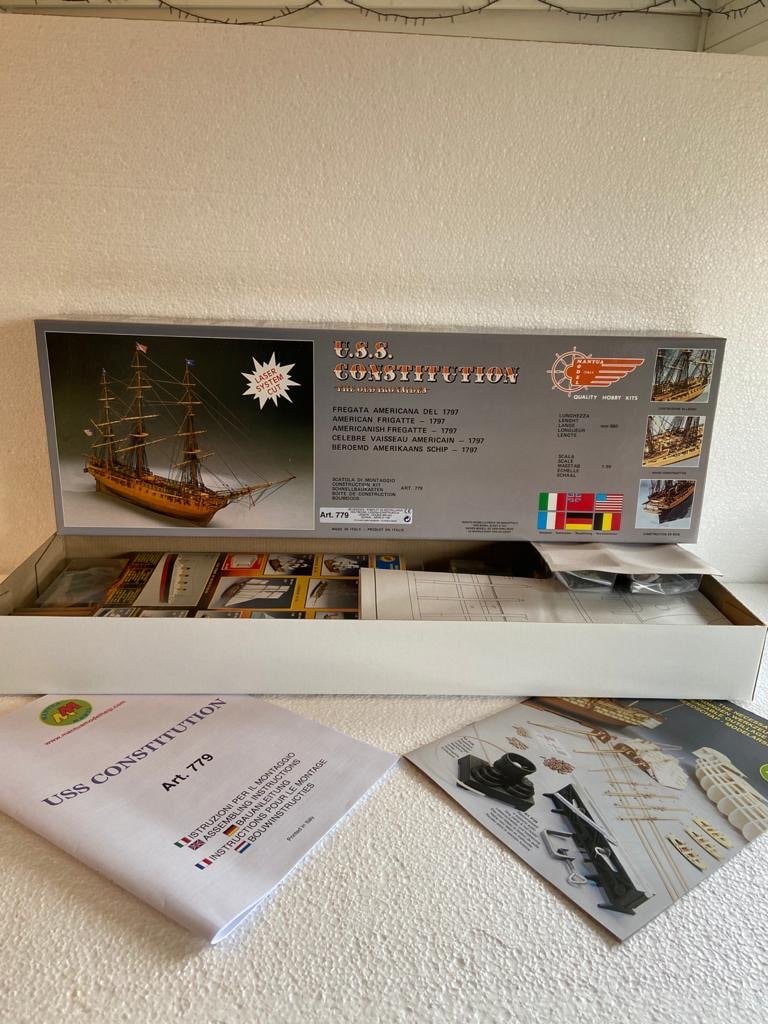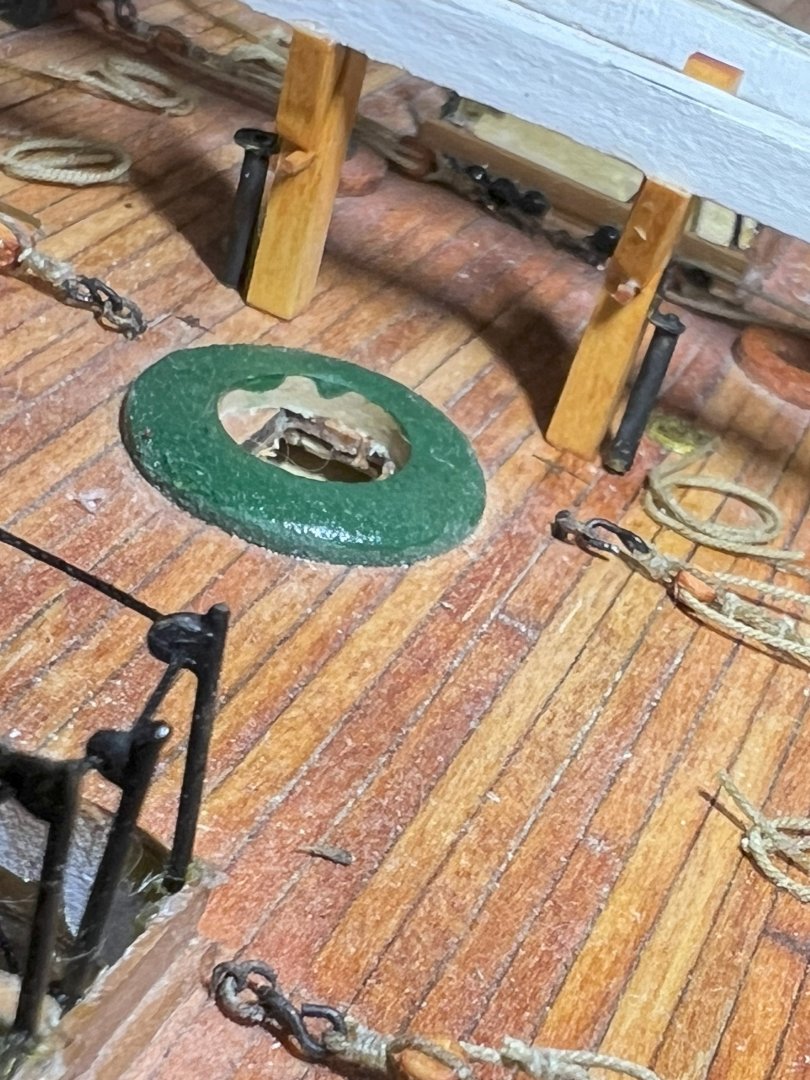-
Posts
2,632 -
Joined
-
Last visited
Content Type
Profiles
Forums
Gallery
Events
Everything posted by JSGerson
-
Gregg, well I don't have ALL the resources, but I do have a bunch😛 As for printing them out full size, I haven't done that as it is costly and inconvenient. I did have the kit's plans copied full size so I could mark them up, fold them in torturous ways, and if they get damaged, no worries. I print out what I need on a regular inkjet printer on standard paper using PowerPoint. When I need to print to model scale, it's by trial and error because PowerPoint can't print to a given scale on command. Additionally, I may need to tape together multiple sheets to get the desired printed image, which I admit is a crude method. Most of the time I just zoom in and out on the computer screen. The US Navy plans have the actual full scale dimensions so it's just a matter of scaling down the numbers for a lot of things. Jon
-
Getting back to the ladder hand ropes, I left the messenger rope loose on the deck as if it had just been released from the cable or chain and the ladders were put back in place. Technically, either the messenger is in place, or the hatch covers and ladders are in use, not both at the same time. In either case, it’s all going to be difficult to see and the layman certainly won’t know anything looks out of place. Next, more spar deck supports and their associated diagonal knees at their bulwarks were installed aft of the capstan. Additionally, some “temporary” (as marked on the US Navy plans) supports (painted white) were added as well. It’s getting really crowded on the gun deck.
-
The messenger rope was installed first since it was wrapped around the capstan. A spliced loop end was created for each end of the messenger rope first. Then the rope was wrapped around the capstan three complete times. The rope went along the gun deck to the bow around a support and back again towards the capstan. There would have been a roller mechanism for this at the apex of the turn in the actual ship, but that will not be seen in this model. The two end loops of the messenger rope were then lashed together. The lashing had to be done using needle and thread in the confined space of the model and was a bit delicate to do. The anchor cable and anchor chain were inserted through their respective hawser holes in the bow, down the length of the deck using anchor chain guides previously installed, and into the pipe in the gun deck. Neither ends of the cable nor chain were permanently installed pending attachment of their anchors at a later date. Oh, I also installed the framework for the main mast so it has a rake of 3.5 degrees.
-
Determination of the Anchor Cable and Messenger Cable Size The question arose: what size is the messenger cable? First, I had to determine the size of the anchor cable. Step one as indicated below, I found on another builder’s log who was quoting one of the historical ship building books of old. Sorry, didn’t record that either. 1. “The Circumference of the anchor cable = 0.62 the Diameter of the mainmast” 2. Main Mast Diameter (US Navy plans) = 32” (full scale) 3. Anchor cable Circumference = 0.62 x 32” = 19.84” (0.258” scale) 4. Anchor cable Diameter = C/π = 0.258”/3.14159 = 0.082” 5. Guestimate that the messenger cable is ½ the Diameter of the Anchor Cable = 0.041” (3” full size) I could not find the rule for messenger cable size, so it was assumed the messenger cable diameter had to be small enough to wrap around the capstan and still be strong enough to pull either the cable or chain. In my stock, I have Syren Ship Model miniature tan rope sizes 0.080” and 0.035” for the anchor cable and messenger cable respectfully which should work for the model.
-
I ran into a couple of surprises that although I had thought about them before, I overlooked in the end. When the capstan is engaged, anything that would interfere with the capstan operation and anchor cable/chain are in the clear, like hatch covers are in place and ladders are stowed away. In my case, I fabricated the hand ropes and stanchions for the ladders going down to the berth deck next to the gun deck capstan. As built, they would interfere with the messenger cable wrapping around the capstan. Also, I forgot to create the ladders going up to the spar deck for the open capstan hatchway, which I took care of. One of the infamous Murphy’s Laws states: that no matter what you must do, you must do something else first. In this case I must install more supporting spar beams and their associated diagonal knees at the bulwarks as well as their support columns. But the more beams I install, the more difficult it becomes to install other items on the gun deck. Therefore, I’m constantly checking the sequence of fabrication and installation. While I’m doing this, I decided it was time to lay down an anchor cable and an anchor chain. There are three anchors that came with the MS kit. One will be attached to the anchor chain, the second one to the anchor cable, and the third will be stowed on the deck. The anchor chain that came with the kit has single links, but according to the photographs of the ship when she last used her anchor in the 1930s, she had a cross-linked chain. Today those chains are being used for mooring. I bought such a chain off the internet a year or so ago and unfortunately neglected to record where I purchased it from. The chain metal appears to be copper which required that it be blackened. The picture below shows the chain after it was blackened and drying.
-
Rich, that is the difference between a model (what you are making) and a reconstruction which matches every little detail to the real thing. Mine is a model, based on the recent 2015-17 restoration, with elements of 1812 and 1927 configurations. We are the ship builders and captains and the resulting product is as much a part of ourselves as it is of the original builders and subsequent restorers of the actual ship. Enjoying yours and Avi's logs Jon
-
Yours was the higher resolution, thanks. My Rattlesnake was kit-bashed and made from natural woods following Mr. Hunt's practicum. Various woods were used for different "colors." (Black paint was used in lieu of Ebony wood (its sawdust is toxic)). To think I tried this on my first POB square rigged ship model is scary to me now, but I didn't know better then. I'm still happy how it turn out. Jon
-
For me, my choice is simple. My model is based (with some exceptions) on the present version because I have access to thousands of photos of the actual ship as she floats today. Building an historic model, I would have to rely on paintings, old books, and old drawings which can be very complicated or assumes the reader has more nautical understanding than I have to understand. So, modern rigging it is for my model. kmart, when you started your build, I believe you were shooting for the 1812 configuration. Bluejacket's model is by design, to be 1812 era. model. I would use that as my primary rigging guide, and fill in in any gaps from other sources as required. You can buy their rigging plans if you don't have them. As you may know, rigging styles vary from era to era, ship to ship, and captains to captains. A ship may leave port with one rigging style and return with another depending on the environment the voyage encountered. So there is no one correct rigging plan. You're the captain of your ship; what you choose for your ship, is by definition, the correct one. Jon
-
I have/use 4 basic power tools: Dremel rotary tool Byrnes table saw - Invaluable!!! Small disc sander 50 yr old Dremel scroll saw I also have, but rarely use these power tools: Byrnes dimensional sander Small wood lathe I have learned not to anticipate a tool I may need in the future because I most likely won't need it. Buy it when you are positive you need it. This goes for both hand and power tools. Always research the tool before you buy. Hope this helps Jon
-
If you have been following my log, you would know that ladders have been my nemesis. I tried building ladders without trend grooves in the side rails like, you early in my build, and luckily they were installed from the gun deck to the berth deck so you couldn't see much of them. They weren't that good. The ones I made for the passage from the gun deck to the spar deck inspired by Mustafa's method, came out much better though still not as nice looking as yours. That was a lot of meticulous work you invested and you were rewarded with beautiful ladders. Well done! Jon
-
I found I enjoyed making that boat so much, it was like eating potato chips, you can't stop at one. Soon after I finished the Rattlesnake, I started working on the Model Shipways USS Constitution. So, the first thing I started working on when I started the model was to fabricate the ship's four whale boats. You might want to check on those. That was seven years ago and I figure I've got another bunch of years to go. Have fun, if nothing else Jon
- 93 replies
-
- ships boat
- model shipways
-
(and 1 more)
Tagged with:
-
All of the horizontal elements should be parallel to the sill. The "vertical" elements however are NOT parallel (and not even vertical for that matter) but point to a vanishing point above the window while taking into account the windows are slanted innards towards the top and curve around the gallery. Something like the vanishing point in a perspective drawing by Salvador Dali. Simple, piece of cake!! 🤪 Good Luck!!!
-
As you have discovered, the quarter galleries are tricky, very tricky. There are no plans for the true shape of the individual windows and each window is different. The laser cut windows supplied by the kit are useless as they are from the elevation view and do not take into account the perspective distortions of all of the curved surfaces. I have the US Navy plans of the galleries, and they were just as confusing. The practicum does one thing right however. Mr. Hunt's end result for the shape of the windows is the best that I've have found. I made numerous attempts in constructing the windows out of wood (not styrene) and finally had to accept what I did as barely acceptable. Take your time, make mock-ups, and don't lose patience. Jon
-
I believe the the vertical rollers help guide and move the anchor chain/cable or the messenger cable (not sure which at this point) when they are activated. They also provide (as you stated) a buffer from them rubbing on the vertical supports and columns. I originally purchased the RP Toolz punch to create the thousands of pseudo boltheads you see on the bulwarks. The method the practicum used, plastic rivets heads, was too labor intensive and I felt the scale was too large. With this punch set, I could punch out 0.6mm - 2.0 mm diameter hemispheric pieces out of the brass plate. In both cases I used the 0.6mm punch. First, to create the pseudo bolthead and then here, to create the bracket holes. The set is not cheap. about $115. I don't remember what I paid for it when I got it some 5 years ago.
-
Another spar support beam was added complete with diagonal knees at the bulwarks where the bitts are located. The bitts in actuality, passes vertically through the planking of the spar deck. This wasn’t done on the model as they won’t be seen as a continuous structure and would just add another layer of complexity to the build. Therefore, the vertical column stopped at the top surface of the spar deck support beam. If all goes well, the bitts on the spar deck will be glued directly over the gun deck bitts without any adjustment. If not, there will be some wiggle room and any slight misalignments won’t be noticed (if all goes well). The rollers were constructed as before for the foremast bitts. A hole was drilled to accept the cross beam. The brass rod slips inside the brass tube. The brackets were made from the brass sheet after a hole was punched into it for each bracket. Then the brass sheet was cut to size and bent to shape. Each wooden bitt was made of two pieces of stained (gunstock) boxwood cut to shape. The vertical pieces with the roller assembly were installed first. Once the glue dried, the diagonal braces were added to ensure a proper fit to the vertical and horizontal surfaces.
About us
Modelshipworld - Advancing Ship Modeling through Research
SSL Secured
Your security is important for us so this Website is SSL-Secured
NRG Mailing Address
Nautical Research Guild
237 South Lincoln Street
Westmont IL, 60559-1917
Model Ship World ® and the MSW logo are Registered Trademarks, and belong to the Nautical Research Guild (United States Patent and Trademark Office: No. 6,929,264 & No. 6,929,274, registered Dec. 20, 2022)
Helpful Links
About the NRG
If you enjoy building ship models that are historically accurate as well as beautiful, then The Nautical Research Guild (NRG) is just right for you.
The Guild is a non-profit educational organization whose mission is to “Advance Ship Modeling Through Research”. We provide support to our members in their efforts to raise the quality of their model ships.
The Nautical Research Guild has published our world-renowned quarterly magazine, The Nautical Research Journal, since 1955. The pages of the Journal are full of articles by accomplished ship modelers who show you how they create those exquisite details on their models, and by maritime historians who show you the correct details to build. The Journal is available in both print and digital editions. Go to the NRG web site (www.thenrg.org) to download a complimentary digital copy of the Journal. The NRG also publishes plan sets, books and compilations of back issues of the Journal and the former Ships in Scale and Model Ship Builder magazines.


